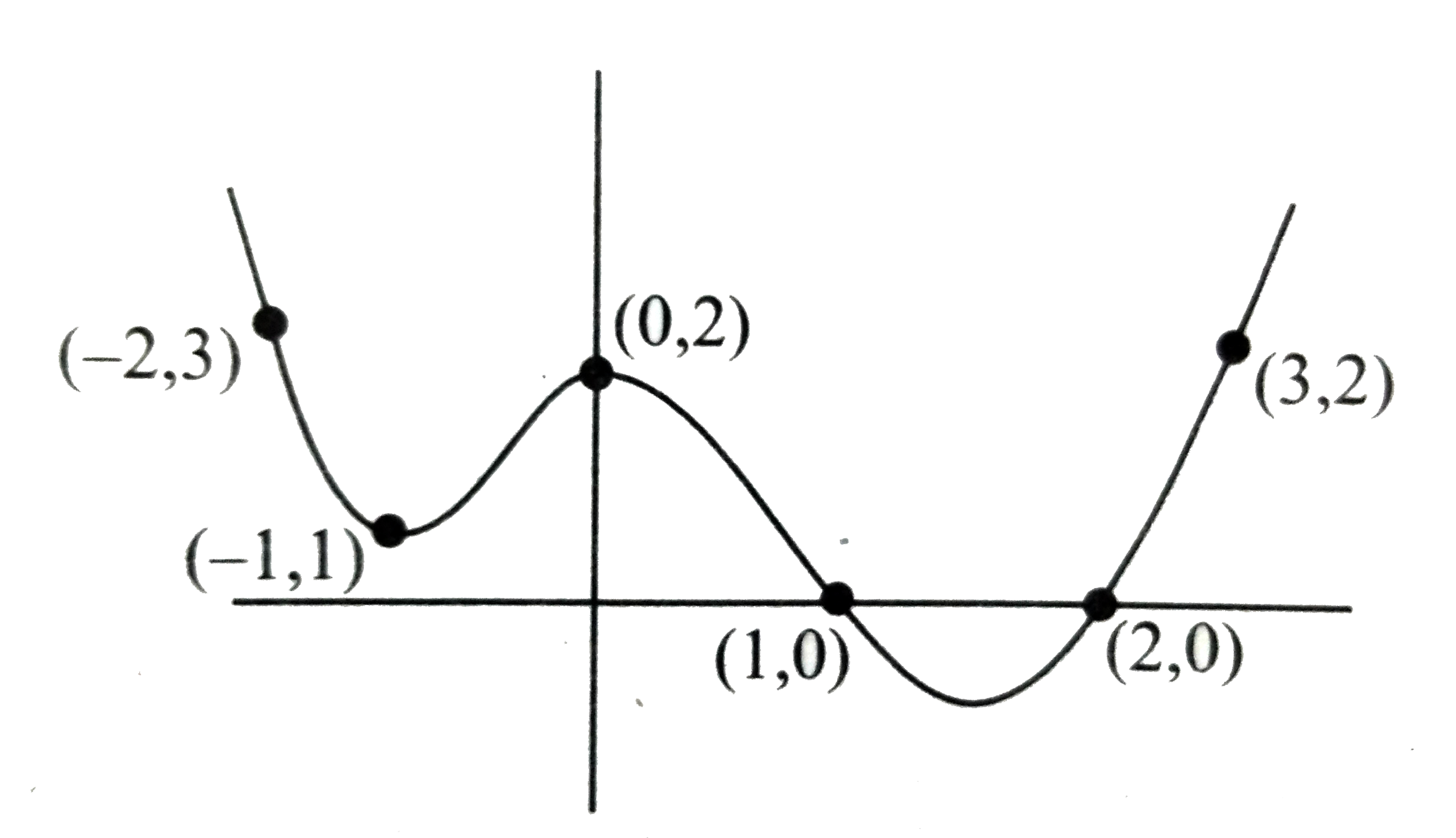Given P(x)=x4+ax3+bx2+cx+d such that x=0 is the only real root of P'(x)==0. If P(−1)<P(1), then in the interval [-1,1]Solution in Telugu
P(-1) is not minimum but P(1) is the maximum of P
P(-1) is the minimum but P(1) is not the maximum of P
neither P(-1) is the minimum and P(1) is the maximum of P
P(-1) is the minimum and P(1) is the maximum of P
The correct Answer is:A
Step by step video, text & image solution for Given P(x)=x^(4)+ax^(3)+bx^(2)+cx +d such that x=0 is the only real root of P'(x)==0. If P(-1) lt P(1), then in the interval [-1,1] by Maths experts to help you in doubts & scoring excellent marks in Class 12 exams.
Topper's Solved these Questions
- BOOK - DIPTI PUBLICATION ( AP EAMET)CHAPTER - APPLICATIONS OF DIFFERENTIATIONEXERCISE - EXERCISE 2 SET-1 (SPECIAL TYPE QUESTIONS)14videos
APPLICATIONS OF DIFFERENTIATION
- BOOK - DIPTI PUBLICATION ( AP EAMET)CHAPTER - APPLICATIONS OF DIFFERENTIATIONEXERCISE - EXERCISE 2 SET-2 (SPECIAL TYPE QUESTIONS)11videos
APPLICATIONS OF DIFFERENTIATION
- BOOK - DIPTI PUBLICATION ( AP EAMET)CHAPTER - APPLICATIONS OF DIFFERENTIATIONEXERCISE - EXERCISE 1D (MEAN VALUE THEOREMS)28videos
APPLICATIONS OF DIFFERENTIATION
- BOOK - DIPTI PUBLICATION ( AP EAMET)CHAPTER - ADDITION OF VECTORS EXERCISE - EXERCISE 2 SET - 48videos
ADDITION OF VECTORS
- BOOK - DIPTI PUBLICATION ( AP EAMET)CHAPTER - BINOMIAL THEOREMEXERCISE - EXERCISE 2 (SPECIAL TYPE QUESTIONS) SET - 44videos
BINOMIAL THEOREM
Similar Questions
If f(x)=x2+3x,x=10,δx=0.01 then
I: δf=0⋅2301
II : df=0⋅23
III : relative error in x is 111:11View SolutionIf f(x)=2x2+3x−5,x=3,δx=0.1 then δf=A
(2) If f(x)=x2+4x,x=2,δx=0.1 then δf=B
(3) If f(x)=x2+3x,x=3,δx=0.1 then δf=C
The ascending order of A, B C is02:14View SolutionThe constant c of Rolle's theorem for the function f(x)=2x3+x2−4x−2 in [−√2,√2] is
01:43View SolutionA : If the positon vectors of A, B are (2, 3, 5), (1, 1, 7) then the unit vector in the direction of −−→AB is −i−2j+2k3
R : Unit vector in the direction of −−→AB is −−→AB∣∣∣−−→AB∣∣∣07:21View SolutionA : If the coefficients of 5th, 6th , 7th terms of (1+x)n are in A.P. then n=7or14.
R : If the coefficients of rth, (r+1)th,(r+2)th terms of (1+x)n are in A.P. then n2−(4r+1)n+4r2=2.03:38View SolutionGiven P(x)=x4+ax3+cx+d such that x=0 is the only real root of P'(x)=0.IfP(1)<P(1) , then in the interval [1,1] . (1) P(1) is the minimum and P(1) is the maximum of P (2) P(1) is not minimum but P(1) is the maximum of P (3) P(1) is the minimum but P(1) is not the maximum of P (4) neither P(1) is the minimum nor P(1) is the maximum of P
04:37View SolutionLet P(x)=x4+ax3+bx2+cx+d be a polynomial such that P(1)=1,P(2)=8,+P(3)=27,P(4)=64 then the value of 152−P(5) is____________.
View SolutionLet P(x)=x^(4)+ax^(3)+bx^(2)+cx+d be a polynomial such that P(1)=1,P(2)=8,P(3)=27,P(4)=64 then find P(10)
06:21View SolutionGiven P(x) =x4+ax3+bx2+cx+d such that x=0 is the only real root of P'(x) =0 . If P(-1) < P(1), then in the interval [−1,1]
07:02View SolutionIn the given figure graph of y=p(x)=x4+ax3+bx2+cx+d is given

The product of all imaginery roots of p(x)=(0) is07:02View SolutionIf P(x)=x^(4)+ax^(3)+bx^(2)+cx+d,P(1)=P2=P(3)=0 then find P(4)
08:13View SolutionGiven P(x)=x^(4)+ax^(3)+ + bx^(2)+cx+d such that x =0 is the only real root of p'' (x)=0 . If P(-1) lt P(1) , then in the interval [-1, 1] :
08:13View SolutionGiven P(x) =x^(4) +ax^(3) +bx^(2) +cx +d such that x=0 is the only real root of P'(x) =0 . If P(-1) lt P(1), then in the interval [-1,1]
10:00View Solutionमाना P(x)=x4+ax3+bx2+cx+d के लिए x=0 ही अकेला P'(x)=0 का वास्तविक मूल है। यदि P(−1)<P(1) है , तब अंतराल [−1,1] में
08:28View Solutionagreed P(x)=x^(4)+ax^(3)=bx^(2)+cx+d For x = 0 alone P'(x)=0 Is the real root of. If P(-1)ltP(1) Is then the interval [-1,1] in
03:28View Solution

